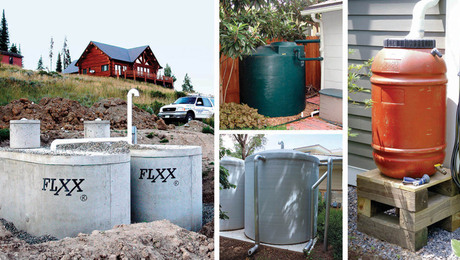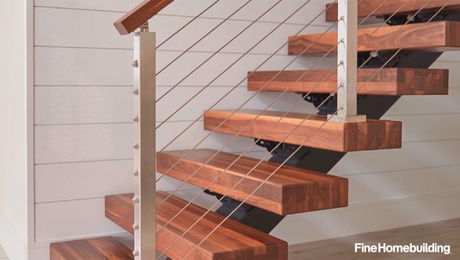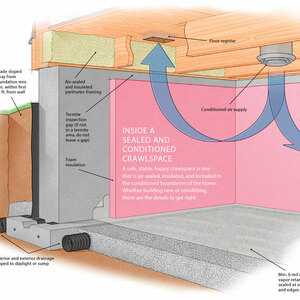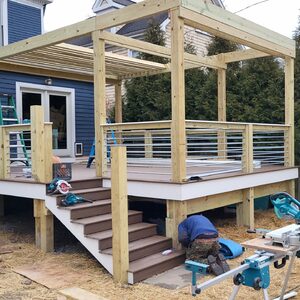I had extra roof vents installed on my 50’s era bungalow a couple of years ago because I was told that the two existing ones weren’t sufficient for the space. The last two winters since (southern Ontario) I’ve experienced terrible moisture and mold problems around the perimeters of the ceilings, particularly in the bedrooms. These problem patches line up perfectly with the soffit vents, which makes me think that the increased air flow through the attic is now cooling the ceilings in these spots like never before. The furnace is also running a lot more which makes me think that I’m losing a lot more heat through the ceiling than previously. My plan is to add extra insulation to the attic because there is only a minimal amount there now and I’m hoping this helps reduce/eliminate the problem. But I’m wondering what the point of venting an attic in the winter is? I can appreciate that increased air flow through a stifling attic in the summer can be beneficial, but what’s the point of sucking the “warm” air out in the winter? Derek
Discussion Forum
Discussion Forum
Up Next
Video Shorts
Featured Story

There's a constant source of clean water for you to use, and all you have to do is collect it.
Featured Video
Builder’s Advocate: An Interview With ViewrailHighlights
"I have learned so much thanks to the searchable articles on the FHB website. I can confidently say that I expect to be a life-long subscriber." - M.K.

















Replies
The first thing is to minimize the heat that is escaping from your house. You are essentially heating the outdoors, same with cooling. Increasing your insulation to R38 at the minimum will reduce the heat you are loosing to the attic.
The insulation won't stop all the heat and it won't prevent heat gain from the sun baking on the roof. If there is snow on the roof, the heat loss will melt it. As it hits the roof overhang at the soffits, where there is no heat, it will freeze. This causes ice dams and water entering the structure.
The idea is to fully ventilate the attic so it's close to the outside temperature. If the ventilation isn't fully venting the attic, you get a temperature difference and the warm air condensates. If the insulation (fiberglass or cellulose) gets wet, it doesn't do it's job. You end up with an accumulation of moisture that gets worse. In snow country, we prefer to use continuous venting at the soffit and the ridge. This gives full, natural air flow.
Gable vents and roof vents may not work due to the pressure created by the warm air in the attic. The whole approach has to include, adequate insulation along with full venting. If either is not up to the standard, the system doesn't work. Properly done, you will see savings that will pay for the work. Right now, you don't have sufficient insulation and you probably don't have enough air flow. Adding ventilation without insulation has made matters worse. The venting is sucking out more heat since the insulation isn't stopping the loss. The system works in reverse during hot weather.
There are other insulation approaches depending on the climate you live in. All center around stopping your money from going out the roof, keeping conditioned air in the space. Sealing up holes and adding insulation should alleviate much of your trouble. Once that's in place, you can look at the venting to see if it's doing the job.
>>But I'm wondering what the
>>But I'm wondering what the point of venting an attic in the winter is? I can appreciate that increased air flow through a stifling attic in the summer can be beneficial, but what's the point of sucking the "warm" air out in the winter?
Because you can get water vapor into the attic any time of year, and you're actually more likely to get condensation and related moisture problems in the attic in the winter than in the summer -
>>because I was told that the two existing ones weren't sufficient for the space.
Was that opinion based on theory ("you need x square feet of free vent space if you have y square feet of attic floor without a vapor barrier.)
Or was that opinion based on actual observation: e.g., signs of condensation on the roof sheathing as viewed in the attic?
In my area (NW Ohio) not as cold as yours; but it gets chilley around here, many 50's houses have "insufficient attic venting" by the 'rules' but show no signs whatsoever of problems resulting from that "deficiency.
Do you know the temps of the walls where you're getting the interior condensation etc?
Are you running a dehumidifier?
Also, in my area, it typically takes a lot of humidity to result in interior condensation from insufficient insulation. (E.g., no insulation at an upper wall/ceiling juncture in a bathroom with no shower fan....)
There is an effect called "wind-wash" that can also be contributing to your trouble.
When cold air enters at the soffit vents to replace the air that is venting up at the roof vents, the flow of cold air washes thru the loose-fill insulation, which is thin at best, at the point where the wall meets the roof. This creates an area of extra-cold ceiling, which will more readily condense moisture inside the house.
In recent years, loose-fill insulation jobs have cardboard or rigid foam baffles installed between the top chords of the trusses above the insulation at each point where there is a soffit vent. This creates a helpful channel to direct the air up along the underside of the roof deck and create a separation between the flow of cold winter air and the thin layer insulation below.
The extra roof venting that you added is not a bad idea, but it may be contributing to increased air flow at the soffits vents.
Thanks. Good information. The guy that did my roof and suggested the extra vents did reference a formula that supported his argument for more vents, and all my neighbors houses had more vents than mine, so it sounded like a good plan. Funny thing is that the attic (and the rest of the house for that matter)never exhibited any signs of 'ventilation' problems of any sort. Its as if the standards in effect at the time the house was built all worked perfectly together. A single change to any one aspect and everything gets thrown out of whack.
As I mentioned, increased insulation is in order and I'll make a point of including the baffles to reduce the wind-wash. I'm also going to check the humidity level as I suspect its way too high. (no one ever complains that the house is too dry).
You're getting some great
You're getting some great answers here. I can add a little so here's how you fix it:
1: stop air leaks at wall plates, pipe and wire penetrations, light boxes, etc. Use silicone caulking or expanding foam. A dirty job, but it will pay off. If you're an over-achiever, you can get the entire attic done in several days. Put gaskets on electrical outlets inside on all exterior walls. These are major air-leakers. Check for open wall joints and fill with paintable caulk (buy clear if you don't want to paint), ceiling to wall joints can develop hair-line cracks that leak alot.
2: add more insulation, batts or loose-fill.
3: soffit baffles are an excellent idea.
You need to seperate the two extreme climate conditions. That is what is causing the condensation.
The moisture is coming from somewhere, either the inside or the outside.
If it's coming from the outside you either have a leaky roof or the vents are not well baffled to keep water from blowing in. (What kind of vents did you install? Are the slots facing toward the house so that rain won't blow directly in?)
If the moisture is coming from inside the house you need to prevent the moisture from getting through. A visit to the attic is in order to inspect for air leaks from the house into the attic. (Note that even without a vapor barrier, a standard drywall ceiling will not pass enough moisture to create problems except in very rare situations. Moisture comes through holes in the ceiling.) Normally ventilation is required to REMOVE such moisture, since most homes leak some air into the attic, and from that standpoint the more ventilation the better.
Actually, a visit to the attic is in order in any event, to study the pattern of moisture staining to see if it sheds any light on your problem.
Derek,
You have correctly deduced that the added soffit vents are making your problem worse.
You need to either pull the soffit boards or climb up into your attic to access the insulation around the top plates of your perimeter wall. (Whether access will be easier from the attic or the building exterior depends on the particularities of your house.)
The best solution -- to stop air leaks and to provide the maximum insulation possible -- is to use closed-cell spray polyurethane foam over you perimeter wall top plates. The foam should be as thick as possible. To get R-38 with closed-cell foam requires about 6 inches.
It's possible to do this work yourself, using a 2-component spray foam kit (a Handi-Pack). It might be easier, however, to hire a competent spray foam contractor.
Martin Holladay, senior editor
http://www.greenbuildingadvisor.com
If you foam around the edges and block ventilation in the process you'll create an even more severe moisture problem.